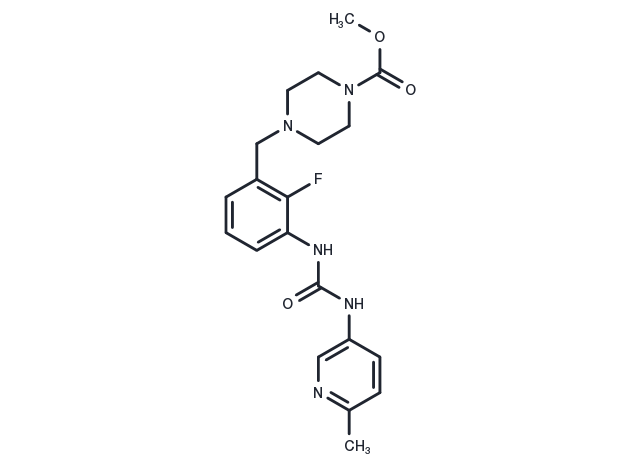Powder: -20°C for 3 years | In solvent: -80°C for 1 year


Omecamtiv mecarbil (CK-1827452) has been used in trials studying the treatment and basic science of Heart Failure, Echocardiogram, Pharmacokinetics, Chronic Heart Failure, and History of Chronic Heart Failure, among others.

| Pack Size | Availability | Price/USD | Quantity |
|---|---|---|---|
| 1 mg | In stock | $ 34.00 | |
| 2 mg | In stock | $ 48.00 | |
| 5 mg | In stock | $ 77.00 | |
| 10 mg | In stock | $ 126.00 | |
| 25 mg | In stock | $ 207.00 | |
| 50 mg | In stock | $ 369.00 | |
| 100 mg | In stock | $ 549.00 | |
| 1 mL * 10 mM (in DMSO) | In stock | $ 68.00 |




| Description | Omecamtiv mecarbil (CK-1827452) has been used in trials studying the treatment and basic science of Heart Failure, Echocardiogram, Pharmacokinetics, Chronic Heart Failure, and History of Chronic Heart Failure, among others. |
| In vitro | Omecamtiv mecarbil induces a decrease in various hemodynamic parameters, including heart rate, mean left atrial pressure, and left ventricular end-diastolic pressure. The effects of Omecamtiv mecarbil on these hemodynamic parameters within dogs with left ventricular hypertrophy, while awake, show similar impacts without significant statistical differences. In conscious dogs with myocardial infarction (MI-sHF), Omecamtiv mecarbil significantly increases wall thickening (25%), stroke volume (44%), cardiac output (22%), and left ventricular (LV) contraction ejection time (26%). |
| In vivo | In isolated cardiomyocytes, Omecamtiv mecarbil (can) enhance(s) the contractility of myocytes, overcoming the inhibition of myosin by BDM without increasing calcium transients or inhibiting the PDE pathway. Ex-vivo, Omecamtiv mecarbil selectively activates cardiac myosin by increasing the rate of myosin ATPase, thereby enhancing myocardial contractility. |
| Kinase Assay | Axl Kinase activity assay: Test compounds are diluted to desired concentrations in kinase reaction buffer (50 mM HEPES pH 7.5, 10 mM MgCl2, 1 mM EGTA, 2 mM DTT, and 0.01% v/v Tween-20) and are briefly incubated with Axl kinase. The Axl kinase used is recombinant human Axl kinase (catalytic domain, amino acids 473-894) with a histidine tag. The reaction is initiated by the addition of ATP and fluorescein-labeled poly-GT substrate (poly Glu:Tyr, 4:1 polymer). Concentration of the various components in the assay (10 μL reaction volume) are: 1% DMSO, 93 ng/mL Axl kinase, 20 μM ATP, and 200 nM fluorescein poly-GT substrate. Following addition of ATP and fluorescein poly-GT substrate, incubation is for 60 min at room temperature, the enzyme reaction is stopped by addition of 10 μL terbium-labeled anti-phosphotyrosine PY20 antibody in EDTA-containing buffer. Final concentration of EDTA and antibody after addition to the reaction is 10 mM and 2 nM, respectively. The terbium conjugated antibody generates a time-resolved FRET signal with the fluorescein molecule (bound to the poly-GT substrate) when the substrate is phosphorylated. After one hour incubation at room temperature, fluorescence is measured with excitation of 320 nm and dual emission of 495 and 520 nm on an EnVision microplate reader. Signal is expressed in -636996terms of a TR-FRET ratio (fluorescence intensity at 520 nm to 495 nm). |
| Synonyms | CK-1827452 |
| Molecular Weight | 401.43 |
| Formula | C20H24FN5O3 |
| CAS No. | 873697-71-3 |
Powder: -20°C for 3 years | In solvent: -80°C for 1 year
Ethanol: 6 mg/mL (14.94 mM)
DMSO: 74 mg/mL (184.3 mM)
You can also refer to dose conversion for different animals. More
bottom
Please see Inhibitor Handling Instructions for more frequently ask questions. Topics include: how to prepare stock solutions, how to store products, and cautions on cell-based assays & animal experiments, etc.
Omecamtiv mecarbil 873697-71-3 Cytoskeletal Signaling Membrane transporter/Ion channel ATPase Myosin CK-1827452 CK1827452 Inhibitor inhibit CK 1827452 inhibitor
